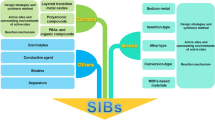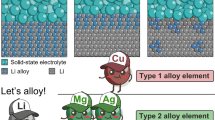Abstract
Rechargeable lithium metal batteries (RLMBs) have been regarded as promising successors for contemporary lithium-ion batteries, in view of their high gravimetric and volumetric energy densities. Conventional non-aqueous liquid electrolytes containing organic carbonate solvents possess high chemical reactivities with metallic lithium anode and high flammability, which induces considerable safety threats under extreme conditions (e.g., overcharging and thermal runaway). Herein, we propose the utilization of fluorinated sulfonamide (i.e., N,N-dimethyl fluorosulfonamide (DMFSA)) as solvent, together with lithium (fluorosulfonyl)(n-nonafluorobutanesulfonyl)imide (LiFNFSI) as co-salt and/or electrolyte additive for accessing safer and high-performing RLMBs. Comprehensive physical (e.g., thermal transition, viscosity, and ionic conductivity) and electrochemical (e.g., anodic stability on different electrodes) characterizations have been performed, aiming to reveal the inherent characteristics of the sulfonamide-based electrolytes and the particular role of LiFNFSI on the stabilization of LiCoO2 cathode. It has been demonstrated that the sulfonamide-based electrolytes exhibit superior flame-retardant abilities and decent ionic conductivities (> 1 mS·cm−1 at room temperature). The incorporation of LiFNFSI as co-salt and/or electrolyte additive could significantly suppress the side reactions occurring at the cathode compartment, through the preferential decompositions of the FNFSI− anion. This work is anticipated to give an in-depth understanding on the working mechanism of LiFNFSI in the sulfonamide-based electrolytes, and also spurs the development of high-energy and safer RLMBs.

Similar content being viewed by others
References
Armand, M. B. Intercalation Electrodes. In Materials for Advanced Batteries. Murphy, D. W.; Broadhead, J.; Steele, B. C. H., Eds.; Springer: Boston, 1980; pp 145–161.
Armand, M.; Tarascon, J. M. Building better batteries. Nature 2008, 451, 652–657.
Xu, J. J.; Zhang, J. X.; Pollard, T. P.; Li, Q. D.; Tan, S.; Hou, S.; Wan, H. L.; Chen, F.; He, H. X.; Hu, E. Y. et al. Electrolyte design for Li-ion batteries under extreme operating conditions. Nature 2023, 619, 694–700.
Mao, C. Y.; Wood, M.; David, L.; An, S. J.; Sheng, Y. P.; Du, Z. J.; Meyer III, H. M.; Ruther, R. E.; Wood III, D. L. Selecting the best graphite for long-life, high-energy Li-ion batteries. J. Electrochem. Soc. 2018, 165, A1837–A1845.
Armand, M.; Axmann, P.; Bresser, D.; Copley, M.; Edström, K.; Ekberg, C.; Guyomard, D.; Lestriez, B.; Novák, P.; Petranikova, M. et al. Lithium-ion batteries—Current state of the art and anticipated developments. J. Power Sources 2020, 479, 228708.
Cheng, X. B.; Zhang, R.; Zhao, C. Z.; Zhang, Q. Toward safe lithium metal anode in rechargeable batteries: A review. Chem. Rev. 2017, 117, 10403–10473.
Yao, N.; Chen, X.; Fu, Z. H.; Zhang, Q. Applying classical, ab initio, and machine-learning molecular dynamics simulations to the liquid electrolyte for rechargeable batteries. Chem. Rev. 2022, 122, 10970–11021.
Zhang, J. B.; Zhang, H. K.; Li, R. H.; Lv, L.; Lu, D.; Zhang, S. Q.; Xiao, X. Z.; Geng, S. J.; Wang, F. H.; Deng, T. et al. Diluent decomposition-assisted formation of LiF-rich solid-electrolyte interfaces enables high-energy Li-metal batteries. J. Energy Chem. 2023, 78, 71–79.
Liu, J.; Bao, Z. N.; Cui, Y.; Dufek, E. J.; Goodenough, J. B.; Khalifah, P.; Li, Q. Y.; Liaw, B. Y.; Liu, P.; Manthiram, A. et al. Pathways for practical high-energy long-cycling lithium metal batteries. Nat. Energy 2019, 4, 180–186.
Kalhoff, J.; Eshetu, G. G.; Bresser, D.; Passerini, S. Safer electrolytes for lithium-ion batteries: State of the art and perspectives. ChemSusChem 2015, 8, 2154–2175.
Kang, G. H.; Zhong, G.; Ma, J. B.; Yin, R.; Cai, K. N.; Jia, T. Q.; Ren, X. L.; Yu, K.; Qin, P. W.; Chen, Z. et al. Weakly solvated EC-free linear alkyl carbonate electrolytes for Ni-rich cathode in rechargeable lithium battery. iScience 2022, 25, 105710.
Borodin, O. Challenges with prediction of battery electrolyte electrochemical stability window and guiding the electrode-electrolyte stabilization. Curr. Opin. Electrochem. 2019, 13, 86–93.
Jaumaux, P.; Wu, J. R.; Shanmukaraj, D.; Wang, Y. Z.; Zhou, D.; Sun, B.; Kang, F. Y.; Li, B. H.; Armand, M.; Wang, G. X. Non-flammable liquid and quasi-solid electrolytes toward highly-safe alkali metal-based batteries. Adv. Funct. Mater. 2021, 31, 2008644.
Feng, X. N.; Ouyang, M. G.; Liu, X.; Lu, L. G.; Xia, Y.; He, X. M. Thermal runaway mechanism of lithium ion battery for electric vehicles: A review. Energy Stor. Mater. 2018, 10, 246–267.
Xu, K. Electrolytes and interphases in Li-ion batteries and beyond. Chem. Rev. 2014, 114, 11503–11618.
Zhang, H.; Qiao, L. X.; Kühnle, H.; Figgemeier, E.; Armand, M.; Eshetu, G. G. From lithium to emerging mono- and multivalent-cation-based rechargeable batteries: Non-aqueous organic electrolyte and interphase perspectives. Energy Environ. Sci. 2023, 16, 11–52.
Tian, X. L.; Yi, Y. K.; Fang, B. R.; Yang, P.; Wang, T.; Liu, P.; Qu, L.; Li, M. T.; Zhang, S. Q. Design strategies of safe electrolytes for preventing thermal runaway in lithium ion batteries. Chem. Mater. 2020, 32, 9821–9848.
Yang, Q. W.; Zhang, Z. Q.; Sun, X. G.; Hu, Y. S.; Xing, H. B.; Dai, S. Ionic liquids and derived materials for lithium and sodium batteries. Chem. Soc. Rev. 2018, 47, 2020–2064.
Ponrouch, A.; Monti, D.; Boschin, A.; Steen, B.; Johansson, P.; Palacín, M. R. Non-aqueous electrolytes for sodium-ion batteries. J. Mater. Chem. A 2015, 3, 22–42.
Fan, X. L.; Ji, X.; Chen, L.; Chen, J.; Deng, T.; Han, F. D.; Yue, J.; Piao, N.; Wang, R. X.; Zhou, X. Q. et al. All-temperature batteries enabled by fluorinated electrolytes with non-polar solvents. Nat. Energy 2019, 4, 882–890.
Li, C. Z.; Li, Y.; Chen, Z. Y.; Zhou, Y. C.; Bai, F. F.; Li, T. Hybrid diluents enable localized high-concentration electrolyte with balanced performance for high-voltage lithium-metal batteries. Chin. Chem. Lett., in press, https://doi.org/10.1016/j.cclet.2022.107852.
Zou, Y. G.; Ma, Z.; Liu, G.; Li, Q.; Yin, D. M.; Shi, X. J.; Cao, Z.; Tian, Z. N.; Kim, H.; Guo, Y. J. et al. Non-flammable electrolyte enables high-voltage and wide-temperature lithium-ion batteries with fast charging. Angew. Chem., Int. Ed. 2023, 62, e202216189.
Pan, A. R.; Wang, Z. C.; Zhang, F. R.; Wang, L.; Xu, J. J.; Zheng, J. Y.; Hu, J. C.; Zhao, C. L.; Wu, X. D. Wide-temperature range and high safety electrolytes for high-voltage Li-metal batteries. Nano Res., in press, https://doi.org/10.1007/s12274-022-4655-1.
Jiang, K. S.; Hobold, G. M.; Guo, R.; Kim, K. H.; Melemed, A. M.; Wang, D. N.; Zuin, L.; Gallant, B. M. Probing the functionality of LiFSI structural derivatives as additives for Li metal anodes. ACS Energy Lett. 2022, 7, 3378–3385.
Hou, W. B.; Zhu, D. L.; Ma, S. D.; Yang, W. J.; Yan, H.; Dai, Y. High-voltage nickel-rich layered cathodes in lithium metal batteries enabled by a sulfolane/fluorinated ether/fluoroethylene carbonate-based electrolyte design. J. Power Sources 2022, 517, 230683.
Yang, T. X.; Li, S.; Wang, W. L.; Lu, J.; Fan, W. Z.; Zuo, X. X.; Nan, J. M. Nonflammable functional electrolytes with all-fluorinated solvents matching rechargeable high-voltage Li-metal batteries with Ni-rich ternary cathode. J. Power Sources 2021, 505, 230055.
Shyamsunder, A.; Beichel, W.; Klose, P.; Pang, Q.; Scherer, H.; Hoffmann, A.; Murphy, G. K.; Krossing, I.; Nazar, L. F. Inhibiting polysulfide shuttle in lithium-sulfur batteries through low-ion-pairing salts and a triflamide solvent. Angew. Chem. 2017, 129, 6288–6293.
Feng, S. T.; Huang, M. J.; Lamb, J. R.; Zhang, W. X.; Tatara, R.; Zhang, Y. R.; Zhu, Y. G.; Perkinson, C. F.; Johnson, J. A.; Shao-Horn, Y. Molecular design of stable sulfamide- and sulfonamide-based electrolytes for aprotic Li-O2 batteries. Chem 2019, 5, 2630–2641.
Xue, W. J.; Shi, Z.; Huang, M. J.; Feng, S. T.; Wang, C.; Wang, F.; Lopez, J.; Qiao, B.; Xu, G. Y.; Zhang, W. X. et al. FSI-inspired solvent and “full fluorosulfonyl” electrolyte for 4 V class lithium-metal batteries. Energy Environ. Sci. 2020, 13, 212–220.
Xue, W. J.; Huang, M. J.; Li, Y. T.; Zhu, Y. G.; Gao, R.; Xiao, X. H.; Zhang, W. X.; Li, S. P.; Xu, G. Y.; Yu, Y. et al. Ultra-high-voltage Ni-rich layered cathodes in practical Li metal batteries enabled by a sulfonamide-based electrolyte. Nat. Energy 2021, 6, 495–505.
Xue, W. J.; Gao, R.; Shi, Z.; Xiao, X. H.; Zhang, W. X.; Zhang, Y. R.; Zhu, Y. G.; Waluyo, I.; Li, Y.; Hill, M. R. et al. Stabilizing electrode–electrolyte interfaces to realize high-voltage Li‖LiCoO2 batteries by a sulfonamide-based electrolyte. Energy Environ. Sci. 2021, 14, 6030–6040.
Wu, H.; Song, Z. Y.; Wang, X. X.; Feng, W. F.; Zhou, Z. B.; Zhang, H. N,N-dimethyl fluorosulfonamide for suppressed aluminum corrosion in lithium bis(trifluoromethanesulfonyl)imide-based electrolytes. Nano Res., in press, https://doi.org/10.1007/s12274-022-4669-8.
Choquette, Y.; Brisard, G.; Parent, M.; Brouillette, D.; Perron, G.; Desnoyers, J. E.; Armand, M.; Gravel, D.; Slougui, N. Sulfamides and glymes as aprotic solvents for lithium batteries. J. Electrochem. Soc. 1998, 145, 3500–3507.
Zheng, L. P.; Zhang, H.; Cheng, P. F.; Ma, Q.; Liu, J. J.; Nie, J.; Feng, W. F.; Zhou, Z. B. Li[(FSO2)(n-C4F9SO2)N] versus LiPF6 for graphite/LiCoO2 lithium-ion cells at both room and elevated temperatures: A comprehensive understanding with chemical, electrochemical and XPS analysis. Electrochim. Acta 2016, 196, 169–188.
Zhang, H.; Arcelus, O.; Carrasco, J. Role of asymmetry in the physiochemical and electrochemical behaviors of perfluorinated sulfonimide anions for lithium batteries: A DFT study. Electrochim. Acta 2018, 280, 290–299.
Xu, K. Nonaqueous liquid electrolytes for lithium-based rechargeable batteries. Chem. Rev. 2004, 104, 4303–4418.
Zhang, H.; Feng, W. F.; Nie, J.; Zhou, Z. B. Recent progresses on electrolytes of fluorosulfonimide anions for improving the performances of rechargeable Li and Li-ion battery. J. Fluor. Chem. 2015, 174, 49–61.
Tong, B.; Wang, J. W.; Liu, Z. J.; Ma, L. P.; Zhou, Z. B.; Peng, Z. Q. Identifying compatibility of lithium salts with LiFePO4 cathode using a symmetric cell. J. Power Sources 2018, 384, 80–85.
Song, Z. Y.; Zheng, L. P.; Cheng, P. F.; Wang, X. X.; Wu, H.; Ma, Q.; Liu, J. J.; Feng, W. F.; Nie, J.; Yu, H. L. et al. Taming the chemical instability of lithium hexafluorophosphate-based electrolyte with lithium fluorosulfonimide salts. J. Power Sources 2022, 526, 231105.
Armarego, W. L. F.; Chai, C. L. L. Chapter 4—Purification of organic chemicals. In Purification of Laboratory Chemicals; 6th ed. Armarego, W. L. F.; Chai, C. L. L., Eds.; Elsevier: Amsterdam, 2009; pp 88–444.
Jones, G.; Bradshaw, B. C. The measurement of the conductance of electrolytes. V. A redetermination of the conductance of standard potassium chloride solutions in absolute units. J. Am. Chem. Soc. 1933, 55, 1780–1800.
Hess, S.; Wohlfahrt-Mehrens, M.; Wachtler, M. Flammability of Li-ion battery electrolytes: Flash point and self-extinguishing time measurements. J. Electrochem. Soc. 2015, 162, A3084–A3097.
Jia, H.; Yang, Z. J.; Xu, Y. B.; Gao, P. Y.; Zhong, L. R.; Kautz, D. J.; Wu, D. G.; Fliegler, B.; Engelhard, M. H.; Matthews, B. E. et al. Is nonflammability of electrolyte overrated in the overall safety performance of lithium ion batteries. A sobering revelation from a completely nonflammable electrolyte. Adv. Energy Mater. 2023, 13, 2203144.
Guo, F.; Hase, W.; Ozaki, Y.; Konno, Y.; Inatsuki, M.; Nishimura, K.; Hashimoto, N.; Fujita, O. Experimental study on flammability limits of electrolyte solvents in lithium-ion batteries using a wick combustion method. Exp. Therm. Fluid Sci. 2019, 109, 109858.
Wang, Y. K.; Li, Z. M.; Hou, Y. P.; Hao, Z. M.; Zhang, Q.; Ni, Y. X.; Lu, Y.; Yan, Z. H.; Zhang, K.; Zhao, Q. et al. Emerging electrolytes with fluorinated solvents for rechargeable lithium-based batteries. Chem. Soc. Rev., in press, https://doi.org/10.1039/d2cs00873d.
Pham, H. Q.; Lee, H. Y.; Hwang, E. H.; Kwon, Y. G.; Song, S. W. Non-flammable organic liquid electrolyte for high-safety and high-energy density Li-ion batteries. J. Power Sources 2018, 404, 13–19.
Linert, W.; Camard, A.; Armand, M.; Michot, C. Anions of low Lewis basicity for ionic solid state electrolytes. Coord. Chem. Rev. 2002, 226, 137–141.
Cataldo, F. A revision of the Gutmann donor numbers of a series of phosphoramides including TEPA. Eur. Chem. Bull. 2015, 42, 92–97.
Hall, D. S.; Self, J.; Dahn, J. R. Dielectric constants for quantum chemistry and Li-ion batteries: Solvent blends of ethylene carbonate and ethyl methyl carbonate. J. Phys. Chem. C 2015, 119, 22322–22330.
Zhang, N.; Deng, T.; Zhang, S. Q.; Wang, C. H.; Chen, L. X.; Wang, C. S.; Fan, X. L. Critical review on low-temperature Li-ion/metal batteries. Adv. Mater. 2022, 34, 2107899.
Zhou, Z. B.; Matsumoto, H.; Tatsumi, K. Low-melting, low-viscous, hydrophobic ionic liquids: 1-alkyl(alkyl ether)-3-methylimidazolium perfluoroalkyltrifluoroborate. Chem—Eur. J. 2004, 10, 6581–6591.
Fulcher, G. S. Analysis of recent measurements of the viscosity of glasses. J. Am. Ceram. Soc. 1925, 8, 339–355.
Tammann, G.; Hesse, W. Die abhängigkeit der viscosität von der temperatur bie unterkühlten flüssigkeiten. Z. Anorg. Allg. Chem. 1926, 156, 245–257.
Vogel, H. The law of the relation between the viscosity of liquids and the temperature. Phys. Z. 1921, 22, 645–646.
Liu, C. Y.; Ma, X. D.; Xu, F.; Zheng, L. P.; Zhang, H.; Feng, W. F.; Huang, X. J.; Armand, M.; Nie, J.; Chen, H. L. et al. Ionic liquid electrolyte of lithium bis(fluorosulfonyl)imide/N-methyl-N-propylpiperidinium bis(fluorosulfonyl)imide for Li/natural graphite cells: Effect of concentration of lithium salt on the physicochemical and electrochemical properties. Electrochim. Acta 2014, 149, 370–385.
Coustan, L.; Shul, G.; Bélanger, D. Electrochemical behavior of platinum, gold and glassy carbon electrodes in water-in-salt electrolyte. Electrochem. Commun. 2017, 77, 89–92.
Chen, R. J.; Zhao, T. L.; Zhang, X. X.; Li, L.; Wu, F. Advanced cathode materials for lithium-ion batteries using nanoarchitectonics. Nanoscale Horiz. 2016, 1, 423–444.
Son, S. B.; Zhang, Z. C.; Gim, J.; Johnson, C. S.; Tsai, Y.; Kalensky, M.; Lopykinski, S.; Kahvecioglu, O.; Yang, Z. Z.; Montoya, A. T. et al. Transition metal dissolution in lithium-ion cells: A piece of the puzzle. J. Phys. Chem. C 2023, 127, 1767–1775.
Qiao, L. X.; Oteo, U.; Martinez-Ibañez, M.; Santiago, A.; Cid, R.; Sanchez-Diez, E.; Lobato, E.; Meabe, L.; Armand, M.; Zhang, H. Stable non-corrosive sulfonimide salt for 4-V-class lithium metal batteries. Nat. Mater. 2022, 21, 455–462.
Krause, L. J.; Lamanna, W.; Summerfield, J.; Engle, M.; Korba, G.; Loch, R.; Atanasoski, R. Corrosion of aluminum at high voltages in non-aqueous electrolytes containing perfluoroalkylsulfonyl imides; new lithium salts for lithium-ion cells. J. Power Sources 1997, 68, 320–325.
Qin, Z. M.; Hong, B.; Duan, B. Y.; Hong, S.; Chen, Y. C.; Lai, Y. Q.; Feng, J. Tributyl borate as a novel electrolyte additive to improve high voltage stability of lithium cobalt oxide in carbonate-based electrolyte. Electrochim. Acta 2018, 276, 412–416.
Dai, X. Y.; Wang, L. P.; Xu, J.; Wang, Y.; Zhou, A. J.; Li, J. Z. Improved electrochemical performance of LiCoO2 electrodes with ZnO coating by radio frequency magnetron sputtering. ACS Appl. Mater. Interfaces 2014, 6, 15853–15859.
Björklund, E.; Göttlinger, M.; Edström, K.; Younesi, R.; Brandell, D. Sulfolane-based ethylene carbonate-free electrolytes for LiNi0.6Mn0.2Co0.2O2-Li4Ti5O12 batteries. Batteries Supercaps 2020, 3, 201–207.
Wang, Z. G.; Wang, Z. X.; Peng, W. J.; Guo, H. J.; Li, X. H.; Wang, J. X.; Qi, A. Structure and electrochemical performance of LiCoO2 cathode material in different voltage ranges. Ionics 2014, 20, 1525–1534.
Fu, S. T.; Liao, S. L.; Nie, J.; Zhou, Z. B. N,N-dialkyl perfluoroalkanesulfonamides: Synthesis, characterization and properties. J. Fluor. Chem. 2013, 147, 56–64.
Zhang, S. D.; Qi, M. Y.; Guo, S. J.; Sun, Y. G.; Tan, X. X.; Ma, P. Z.; Li, J. Y.; Yuan, R. Z.; Cao, A. M.; Wan, L. J. Advancing to 4.6 V review and prospect in developing high-energy-density LiCoO2 cathode for lithium-ion batteries. Small Methods 2022, 6, 2200148.
Xu, K. Interfaces and interphases in batteries. J. Power Sources 2023, 559, 232652.
Tong, B.; Song, Z. Y.; Wan, H. H.; Feng, W. F.; Armand, M.; Liu, J. C.; Zhang, H.; Zhou, Z. B. Sulfur-containing compounds as electrolyte additives for lithium-ion batteries. InfoMat 2021, 3, 1364–1392.
Hirata, K.; Kawase, T.; Sumida, Y. Electrode/electrolyte interface study of LiCoO2/graphite cell using carbonate-free electrolytes based on lithium bis(fluorosulfonyl)imide and sulfolane. J. Electrochem. Soc. 2020, 167, 020518.
Zhang, H.; Judez, X.; Santiago, A.; Martinez-Ibañez, M.; Muñoz-Márquez, M. Á.; Carrasco, J.; Li, C. M.; Eshetu, G. G.; Armand, M. Fluorine-free noble salt anion for high-performance all-solid-state lithium-sulfur batteries. Adv. Energy Mater. 2019, 9, 1900763.
Park, M. W.; Park, S.; Choi, N. S. Unanticipated mechanism of the trimethylsilyl motif in electrolyte additives on nickel-rich cathodes in lithium-ion batteries. ACS Appl. Mater. Interfaces 2020, 12, 43694–43704.
Acknowledgements
This work is financially supported by the Fundamental Research Funds for Central Universities, HUST (No. 2020kfyXJJS095), and the National Natural Science Foundation of China (Nos. 52203223 and 22279037).
Author information
Authors and Affiliations
Corresponding authors
Electronic Supplementary Material
12274_2023_5726_MOESM1_ESM.pdf
Lithium (fluorosulfonyl)(n-nonafluorobutanesulfonyl)imide for stabilizing cathode–electrolyte interface in sulfonamide electrolytes
Rights and permissions
About this article
Cite this article
Wu, H., Song, Z., Feng, W. et al. Lithium (fluorosulfonyl)(n-nonafluorobutanesulfonyl)imide for stabilizing cathode–electrolyte interface in sulfonamide electrolytes. Nano Res. 16, 9507–9518 (2023). https://doi.org/10.1007/s12274-023-5726-7
Received:
Revised:
Accepted:
Published:
Issue Date:
DOI: https://doi.org/10.1007/s12274-023-5726-7




